The Jewish Role in China's Opium Wars
The Hong Kong Museum of History, located on 100 Chatham Road South in Tsim Sha Sui, Kowloon, is divided into four main areas of interest: natural history, archaeology, ethnography and local history. According to the museum’s website, Hong Kong Museum of History, the local history gallery “outlines the Opium Wars, their causes, the way in which the wars unfolded and the consequences.”
One vital fact is not mentioned in the Hong Kong’s museum’s historical gallery. Although the gallery’s descriptive texts do mention the fact that opium was introduced by the British merchants, it doesn’t mention who those British merchants were. The British government had granted "monopoly rights" to the manufacture of cotton goods, silk and most importantly, opium -- at that time the most addictive drug in the world - to one British merchant. That one British merchant was David Sassoon.
David Sassoon – “the Rothschild of the East” – the son of Saleh Sassoon of Baghdad, Iraq, “was a Bombay businessman who owned a counting house, a small carpet godown and an opium business.” David Sassoon
“The Jewish Encyclopedia of 1905, states that Sassoon expanded his opium trade into China and Japan. He placed his eight sons in charge of the major opium exchanges in China. According to the 1944 Jewish Encyclopedia: "He employed only Jews in his business, and wherever he sent them he built synagogues and schools for them. He imported whole families of fellow Jews . . . and put them to work." Sassoon's sons were busy pushing this mind-destroying drug in Canton, China. Between 1830 and 1831 they trafficked 18,956 chests of opium, earning millions of dollars. Part of the profits went to Queen Victoria and the British government. In the year 1836 the trade increased to over 30,000 chests and drug addiction became endemic in coastal cities.” Hong Kong, Land Built on Opium
The gallery tells the story of how British merchants were buying Chinese goods – tea, silk, spices, salt, a ‘magical’ cloth - asbestos, gunpowder, ceramics and iron products, in exchange for silver and gold, especially silver. The gallery tells how the British merchants wanted the Chinese to buy goods from the British, but only got the reply that the British had nothing the Chinese wanted. This one-sided trade caused a deficit of payments for the British traders, a deficit they didn’t like, as they were spending silver and gold species in exchange for the Chinese silk, tea and manufactured goods but no hard currency was returning to Britain. The British demand for Chinese products was so great and, because of the demand that they be paid in real species - the silver being mined in the 1800s in South America – e.g. Peru, was dropped shipped directly to China from the South American ports. The trade imbalance was so great, that it resulted in the Chinese accumulating half the world’s reserves of silver. This imbalance disturbed the British merchants.
In 1839, the Manchu Emperor demanded a stop to the opium smuggling into China. The Emperor appointed the Commissioner of Canton, Lin Tse-hsu, to lead a campaign against opium. Lin-Tse-hsu was a moral and incorruptible individual. He seized 2,000 chests of opium, and as depicted in the museum’s gallery, damned off part of the seashore in Hong Kong in which to destroy the prodigious amount of seized opium. This act of Lin Tse-hsu outraged Sassoon and when his demands went unmet, easily defeated the Chinese army who, after over 10 years of opium addiction, had been devastated and proved no match for the superior equipped and trained British forces, who acted as mercenaries for the Sassoons. The first Opium War ended in 1842 and culminated in the “Treaty of Nanking.” The so-called ‘peace treaty’ included three important provisions, all highly favorable to Sassoon:
1. Full legalization of the opium trade in China
2. Compensation from the opium stockpiles confiscated by Lin of two million pounds
3. Territorial sovereignty for the British Crown over several designated offshore islands.
The Treaty of Nanking gave Sassoon monopoly rights to push opium in port cities of China. Not satisfied with just addicting the Chinese in the coastal areas, he demanded the right to sell his drug to the millions of Chinese throughout mainland China. British Prime Minister Palmerston declared that all of interior China must be open for uninterrupted opium traffic. When the Chinese resisted, Sassoon’s British mercenaries started the Second Opium War of 1858 – 1860. In October, the British besieged Peking. When the city fell, British commander Lord Elgin, ordered the temples in the city sacked and burned to the ground as a show of contempt. In the new "Peace Treaty" of Oct.25, 1860, the British were assigned rights to a vastly expanded opium trade covering seven-eights of China, which brought in over 20 million pounds in 1864 alone. In that year, the Sassoons imported 58,681 chests of opium and by 1880 it skyrocketed to 105,508 chests, making the Sassoons the richest Jews in the world. England was given the Hong Kong peninsula as a colony and large sections of Amoy, Canton, Foochow, Ningpo and Shanghai. The Sassoons were now licensing opium dens in each British occupied area with large fees being collected by their Jewish agents. Sassoon would not allow any other race to engage in "the Jews' business."
However, the British government would not allow any opium to be imported into Europe! Hong Kong - Land Built on Opium
Today, another war promoted by International Jewry is being waged in Afghanistan, the world's top supplier of opium. Once again we see how Jews use the goyim - in this instance young American men and unfortunately women - to fight their wars for profit in yet another attempt to satisfy their insatiable lust for money and power no matter what the cost to human lives and other peoples' resources.

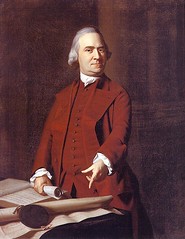
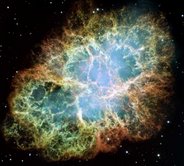





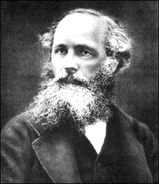

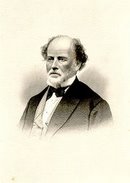
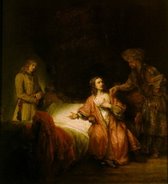








0 comments:
Post a Comment